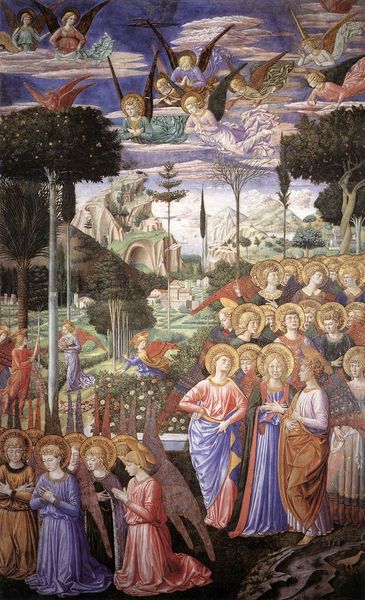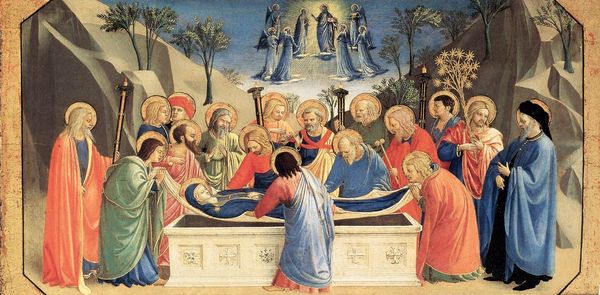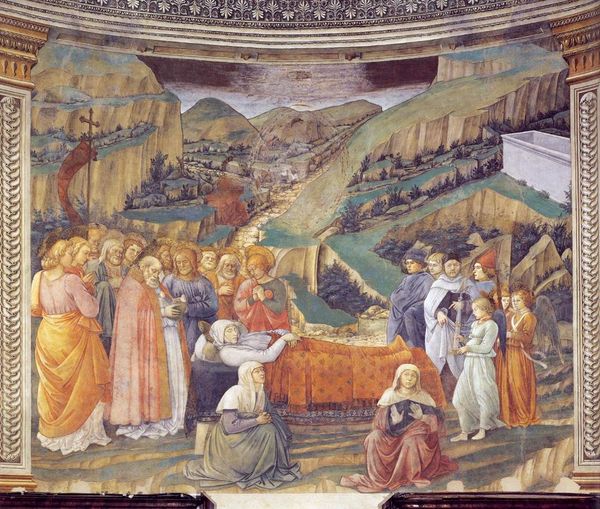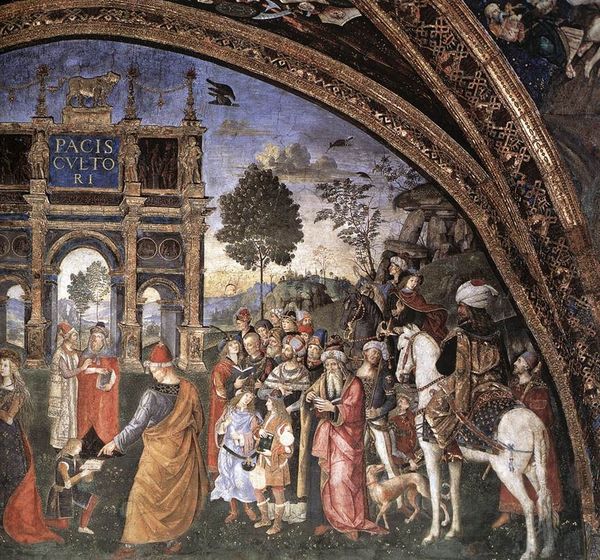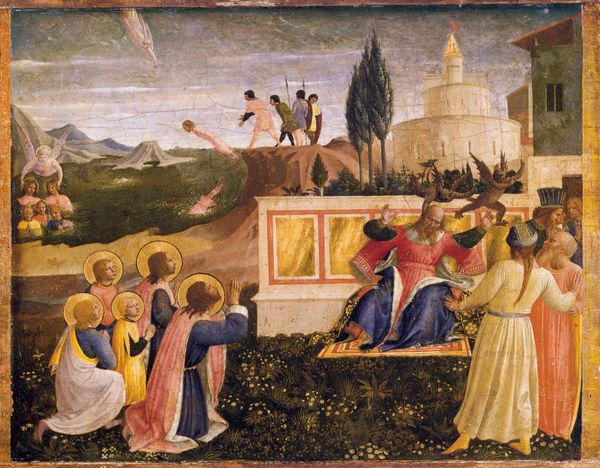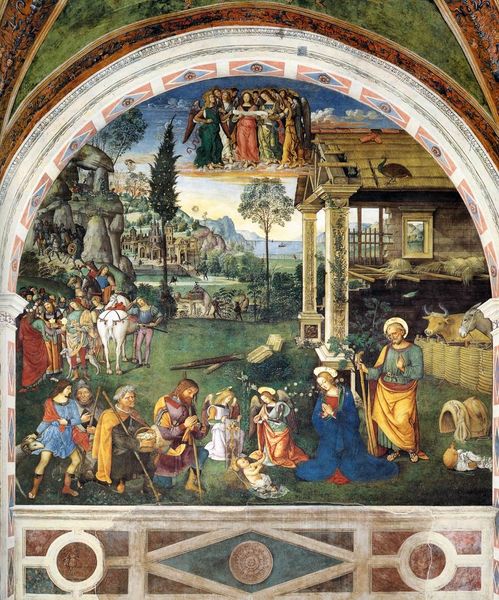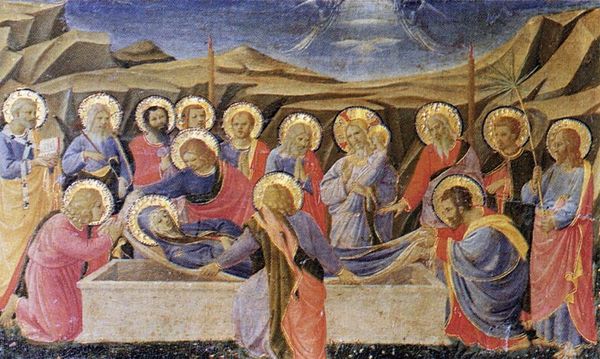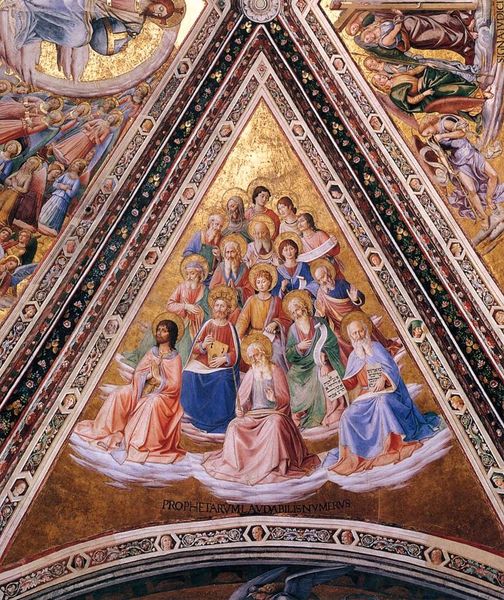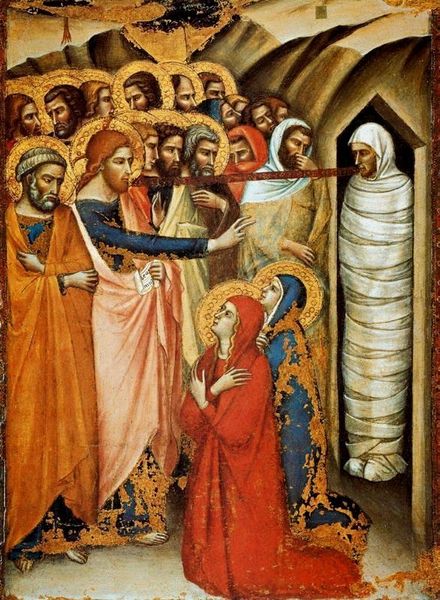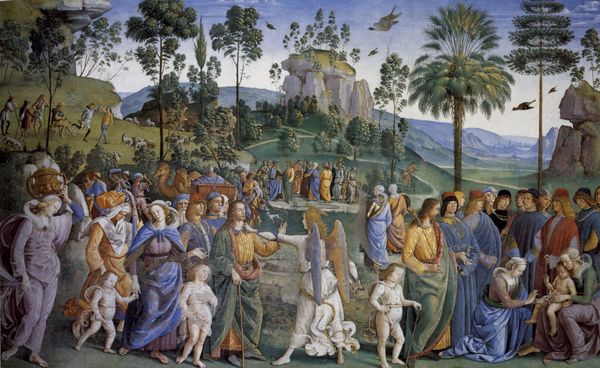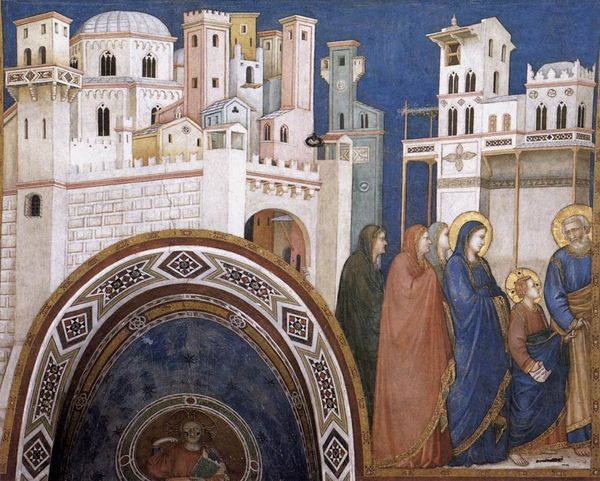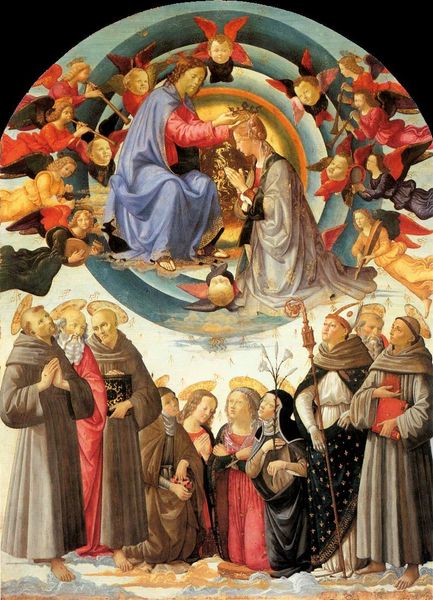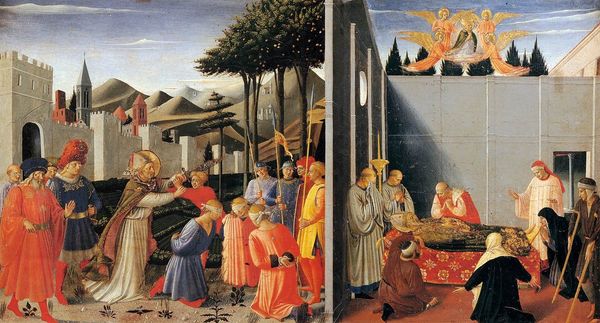
painting, fresco
#
painting
#
landscape
#
holy-places
#
figuration
#
fresco
#
oil painting
#
christianity
#
italian-renaissance
#
early-renaissance
#
angel
#
christ
Copyright: Public domain
Editor: Benozzo Gozzoli's "Angels Worshipping," a fresco from 1461, is so striking! The sheer number of figures, all these delicate angels in this idyllic landscape... It feels almost like a theatrical production. What do you make of the way Gozzoli presents this scene? Curator: It’s crucial to see this within its original context, part of the chapel frescoes in the Palazzo Medici-Riccardi. This wasn’t simply religious art; it was a very public display of the Medici family's power and piety. Think about the political landscape of Florence at the time. What would such a lavish display communicate to the city's inhabitants? Editor: That they had immense wealth and influence, clearly. But how did that impact the art itself? Curator: Precisely! The commission served specific needs. The Medici wanted to present themselves as divinely favored, associating themselves with religious authority during a period of significant political maneuvering. The inclusion of angels isn't just about religious devotion; it's about elevating the Medici family within the social hierarchy of Florence. Do you see how Gozzoli’s fresco can be interpreted beyond its apparent religious subject matter? Editor: I never thought about the landscape representing power. Seeing it that way… the idealisation makes sense, almost like stage-setting. It gives a totally new dimension. Curator: Exactly. And understanding the institutional framework that supported works such as these shows us how art, even ostensibly religious art, played a vital public role in reinforcing social and political structures. Editor: Thanks, I get it. Now, when I look at this work, I'll definitely think more deeply about how Gozzoli was shaped by, and how it then shaped, the world around it!
Comments
No comments
Be the first to comment and join the conversation on the ultimate creative platform.
